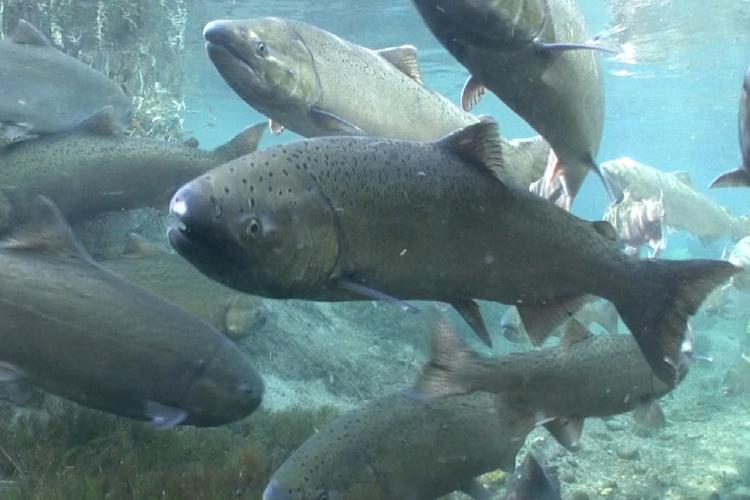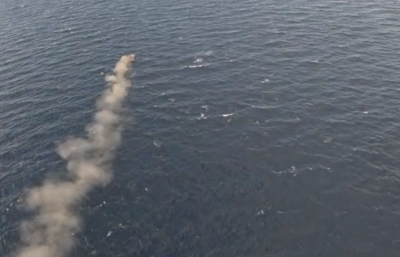Record high fuel prices and dwindling participation slowed the pace of this summer’s chinook troll season in Southeast.
The season kicked off on July 1, and with it hopes of a fishery that would last up to 12 days before the fleet landed their allocation of non-Alaska, Pacific Salmon Treaty chinooks.
By July 12, however, harvest data and a decline in effort by the fleet indicated that the season could last longer. As of July 9, the fleet had caught only 21,480 chinooks, according to data with the Alaska Department of Fish and Game.
The total number of chinooks for Alaska fishermen under the 2021-2022 management plan totals 193,150 chinooks, but allocations among seiners, set netters, sport fishing interests and deductions of treaty fish harvested in the winter troll fishery come off the top, leaving the fleet to about 107,000 fish for the first retention period in July. The 107,000 fish represents 70 percent of the total allocation during the first harvest period, with the remaining 30 percent on tap for a second opener in August.
Trollers also take chinooks in the spring troll fishery, but the predominance of those stocks are produced in Southeast hatcheries and fishing areas are constricted to waters in proximity to those hatcheries. The origins of salmon are determined by coded wire tags in the noses of the fish, and higher percentages of Alaska fish in catch samples warrant an upward adjustment in the caps of treaty fish. Totals for the winter and spring troll fisheries added up to a respective 28,239 and about 13,000 chinooks.
A prevalent theory behind the lagging chinook deliveries in July is that the high cost of fuel has been keeping more trollers tied to the docks—and may be preventing others from fishing at all.
The average weight per fish in July stood at 10.5 pounds, with ex-vessel offers of $5.77 per pound. That’s not a bad price in the history of the summer fishery, but it doesn’t pencil out in terms of profitability against the going rate of $6 per gallon for diesel.
“We anticipated that the season would last 10 to 12 days,” says Hagerman. “Things are down a little in the catch per day, but the effort is really down this year.”
The historical average of boats participating in the summer troll fishery crunches out to around 600 boats, but this year’s fleet numbers only 540.
“Those are record lows,” says Hagerman.
Recent reductions in harvest allocations based on treaty agreements with Canada and other reductions to satisfy wild stock conservation efforts may be additional factors.
At the same time, trollers can target cohos already in June. The season runs to September 20 but can stretch for another 10 days, if in-season harvest levels and other indicators suggest higher abundance. This summer’s coho catch as of July 9, totaled 38,180 at an average 5 pounds and ex-vessel prices of $1.77 per pound.
Historically, early summer coho catches have been incidental to the chinooks, but with strong ex-vessel offers and a good showing in the early season many fishermen have switched their tactics to capitalize on the cohos when the chinook bite is slow.
“The coho fishing has been picking up,” Hagerman says. “We’re seeing some real good coho numbers.”
Hagerman says that yet other trollers bowing out of the chinook fishery may be betting on the return of hatchery-released chum salmon.
“We’ve had really good chum production in the last couple of years.”
During last year’s August opening for chinooks an unprecedented 150 boats opted to fish chums near the hatcheries instead of chasing chinooks. With ex-vessel prices of more than $1 per pound and the fishing grounds just minutes away from Sitka they landed a record-breaking 500,000 chums in a single day.
“They were making a lot more money fishing for chums near town than to burn fuel and go looking for chinooks or cohos,” says Hagerman, “I think that a lot of them are hoping for that again this year.”
Early offers for the chums this year stood at $1.20 per pound and prices were expected to increase as the season approached. Among other trends affecting demand for Alaska’s troll-caught salmon the reopening of restaurants since the pandemic has reopened the pipeline for fresh seafood products, particularly chinooks shipped fresh during the winter season. Ex-vessel prices last winter averaged $10.42 per pound, almost double of the frozen product put up in summer.
Though a shift away from shelf-stable product forms and a return to fresh re-establishes outlets for chinooks and other salmon a latent effect of the pandemic is that an increasing number of consumers want to know where their fish comes from.
“I like buying their (troll-caught) fish because I like the transparency of knowing the individuals and their methods,” says Nate Whitley, a chef at Terroir, an upscale supper club in Boise, Idaho. “It gives me confidence that I am supporting a sustainable fishery. Knowing the source of your food personally is better than what any labeling can offer.”







